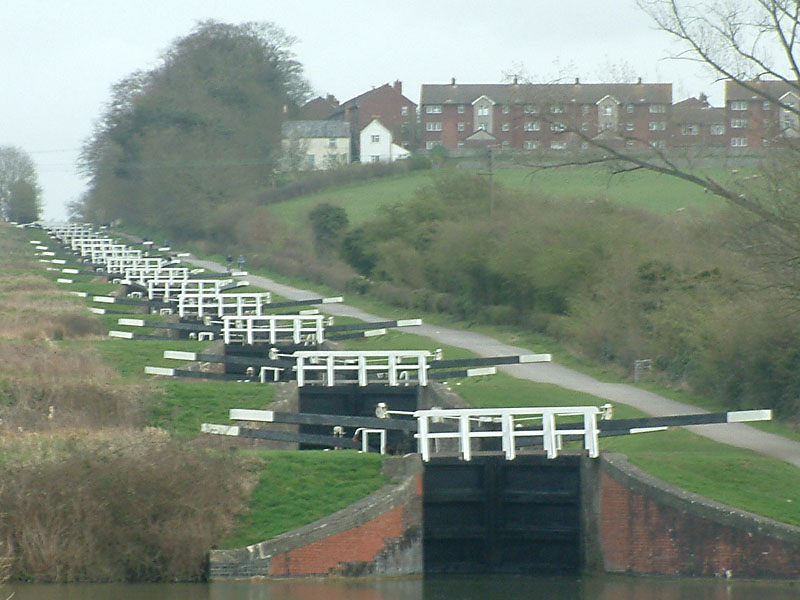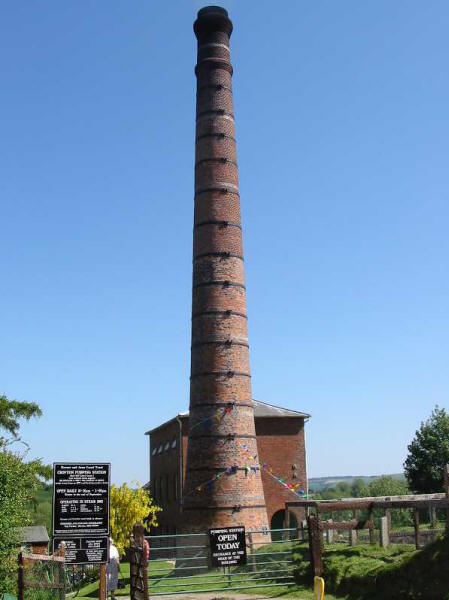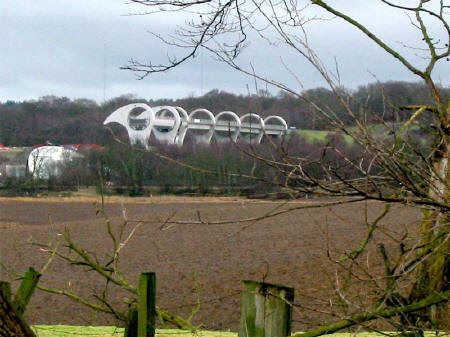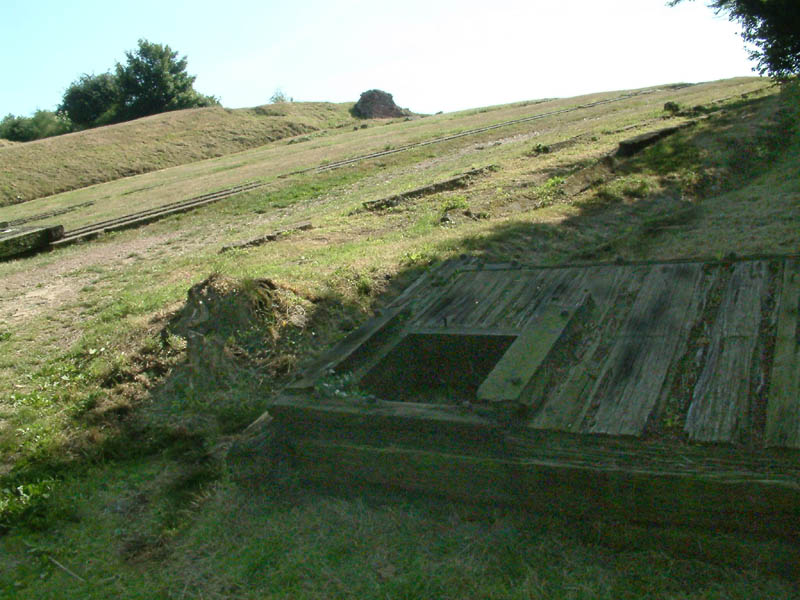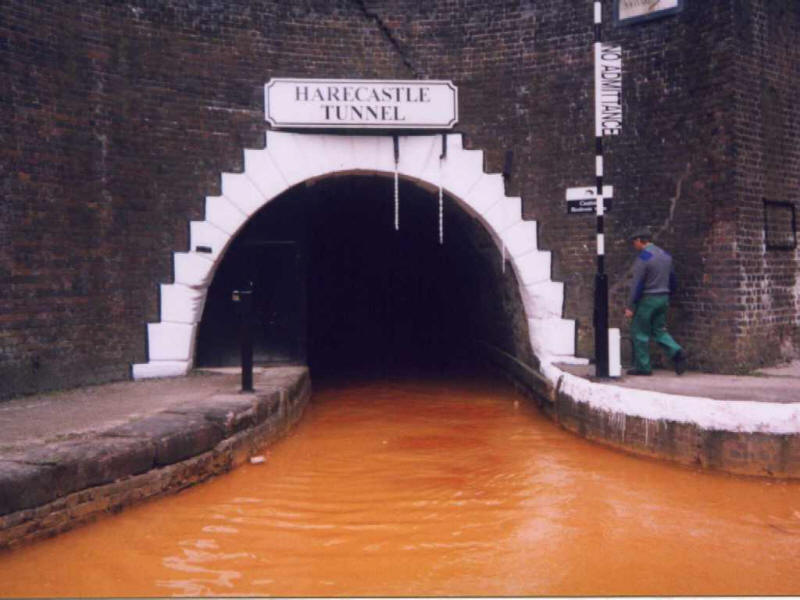The Seven Wonders of the Waterways...The original "Seven Wonders of the Waterways" was compiled half a century ago by Robert Aickman (co-founder of the Inland Waterways Association) and published in his book Know Your Waterways. The list features:
Videoactive, who produce an excellent series of videos and DVDs of canals, publish one called "Seven Wonders of the Waterways". We gained this fairly early on in our canal-visiting, and so for us it was the seven for some time. Videoactive considers the seven to be Pontcysyllte Aqueduct, Barton Swing Aqueduct, Anderton Boat Lift, the Bingley Five-Rise, plus the following additions:
In 2002, British Waterways conducted a poll of the public to choose the "Seven Wonders of the Inland Waterways for the 21st Century". The list selected was Anderton Boat Lift, the Bingley Five-Rise, Caen Hill Flight, Pontcysyllte Aqueduct, Standedge Tunnel, plus the following additions:
This produces a grand total of 12. So, for the first time, we present: The Twelve Wonders of the Waterways!Anderton Boat LiftConnecting the Trent & Mersey Canal with the River Weaver this boat lift, opened in 1875, raises boats 50 feet from the river. Designed by Edwin Clark it consisted of two counterbalancing caissons each large enough to take a barge or a pair of narrowboats. Hydraulic cylinders controlled the movement and the main force powering the movement was gravity, the descending caisson having an extra 6 inches of water added to its load. A 10 horse-power steam pump provided extra power for the completion of the process. In 1908 the lift was converted to electric power, 250-ton counterweights added and the two caissons were made to work independently. In 1983 problems with the mechanism caused the lift to close. A grant from the Heritage Lottery Fund enabled the restoration of the lift, which was reopened in 2002.
Barton Swing AqueductThe original Barton Aqueduct was built by James Brindley in 1761 to take the Duke of Bridgewater's eponymous canal across the River Irwell. This early aqueduct was considered a marvel at the time of its opening although its design was often surpassed by later aqueducts. When the Manchester Ship Canal decided to use the course of the Irwell at Barton as part of their navigation channel it was necessary to demolish Brindley's aqueduct and replace it with a structure even more marvellous. The Barton Swing Aqueduct was designed by Edward Leader Williams and opened in 1893. The aqueduct swings open, full of water, to allow the passage of ships along the Manchester Ship Canal. The swinging span is 235 feet long and weighs 1,450 tons. Hydraulic rams are used to drive rubber seals into each end of the moveable tank.
Bingley Five-Rise
The Bingley Five-Rise Locks raise (or lower) boats through 60 feet in five cavernous chambers, an awe-inspiring experience. The staircase was designed by the Leeds & Liverpool's chief engineer, John Longbotham, and completed in 1774. For many, many years it has been the pride and joy of its resident lock-keeper, Barry Whitelock. More pictures...
Burnley EmbankmentRather than take a long tour following the contours of the land, a large embankment was built to carry the Leeds and Liverpool Canal across the valley here, almost a mile long and up to sixty feet high. The embankment was designed by Robert Whitworth, the Leeds and Liverpool Canal Company Engineer. As all the earth had to be brought here by hand, it is a very impressive construction, though why it should have earned the accolade of a Wonder above some of the embankments on the Shropshire Union Canal is not clear - perhaps because it was built some thirty years earlier, in 1795, when such an undertaking was even more remarkable. Also, because the embankment is open, with views across the rooftops of Burnley, it seems higher than others where the banks have grown dense forests over the intervening 150-200 years. We haven't been to the Burnley Embankment yet, but photos will follow when we have.
Caen Hill Flight
The flight of 29 locks at Caen Hill, Devizes is not the longest in the country (that honour belonging to the 36 locks at Tardebigge on the Worcester and Birmingham Canal), but is visually far more impressive because 16 of the locks fall in a straight line, close together with large side ponds. The locks were the final link in the Kennet and Avon Canal, and opened on 28 December 1810. The locks became derelict by about 1950, but after a strong campaign against closure of the canal, followed by a major restoration effort, were reopened by HM The Queen on 8 August 1990. Photos of a visit to Caen Hill...
Crofton Pumping Station
The summit level of the Kennet and Avon Canal is 450ft above sea level, some 40ft higher than reliable local water sources needed to replenish the water in the summit level. The original plan when the canal was proposed was for a summit level at 410ft, but this would have required a long tunnel, and a cheaper alternative was sought. The steam engine at Crofton was used to lift water 40ft into the higher summit level, saving £41,000 on the total construction costs of the canal. The brick chimney was built in 1856 to replace a previous iron one. The top 36 feet were declared unsafe in the 1950s and removed, and the reduced draft made the pumping station unworkable, and it was closed. However, in 1968 the pumping station was sold to the Kennet & Avon Canal Trust, who have lovingly restored it, and the chimney was rebuilt in 1996-97 to its original height of 82 feet. More pictures...
Falkirk WheelThe Falkirk Wheel is a boat lift designed to connect the Union Canal with the Forth and Clyde Canal, some 25 metres below. It is part of the Millennium project to restore the canals linking the east and west coasts of Scotland. Previously there had been a long flight of locks to make the connection between the Forth & Clyde and Union Canals, but these have been destroyed and built upon. The Union Canal to the east has been extended, ending with a smaller number of locks and then a tunnel under the Antonine Wall, which emerges along the embankment and aqueduct shown, to the Wheel. Boats are carried in the caissons of the wheel down into or up from a new basin, which connects with the Forth & Clyde Canal to the west. The Falkirk Wheel is the world's first and only rotating boat lift. Visitors can soon enjoy 'The Falkirk Wheel Experience' using special amphibious "trip" boats at the site. The Falkirk Wheel boat lift can carry six hundred tonnes including eight or more boats at a time with a single trip taking about 15 minutes. The Royal Fine Art Commission for Scotland commented: "There has been a definite attempt to design the Wheel for the 21st Century. This design is considered to be a form of contemporary sculpture. The combination of cultural and technical factors adds considerably to the effectiveness of the overall concept and has resulted in a truly exciting solution."
Foxton Inclined Plane
The lock flight at Foxton was built in 1810, the journey through the ten 7' wide locks taking about 45 minutes to climb the 75 ft hill. With railway competition starting to bite in the late 19th century, the main canal carriers, Fellows Morton and Clayton wanted to use bigger boats to take coal from the north to the London factories. As part of this plan, two boat lifts were planned, at Foxton and Watford, which would capable of carrying boats 14' wide, thus speeding up transport as well as allowing larger boats. The Foxton lift opened in 1900. It had two tanks or caissons, each capable of holding two narrow boats or a barge. The tanks were full of water, and balanced each other. The lift was powered by a 25 horsepower engine. A journey time of 12 minutes for two boats up and two down improved the speed tremendously, and the same “lump” of water went up and down the hill all day so a very big saving of water was achieved giving better control of this precious resource. The lift worked well, but the locks at Watford Gap were never widened, and the traffic didn't increase. This made the lift uneconomic. The locks were refurbished for night traffic in 1909, in 1911 the Lift was mothballed to save money, the traffic returning to the locks which have been in use ever since. In 1928 the machinery was sold for scrap. There is now an ambitious plan to rebuild (restore isn't really appropriate) a boat lift on the site.
Harecastle Tunnel
The original Harecastle Tunnel was was designed by James Brindley. The longest tunnel in the world at the time, it took eleven years to build, was one and three-quarter miles long, and opened in 1777, five years after Brindley's death. Teams of "leggers" propelled boats through the towpathless tunnel, taking two to three hours for the journey. Not surprisingly, the tunnel became a serious bottleneck, and a second tunnel was built with Thomas Telford as consultant engineer. With advances in tunnel engineering, the new tunnel was completed, including a towpath, in just three years, opening in 1827. Until the early years of the 20th century, Brindley's tunnel was used for southbound boats and Telford's for northbound, but in 1914 Brindley's tunnel, badly affected by mining subsidence, was abandoned.
Pontcysyllte AqueductThe Aqueduct was built between 1795 and 1805 by the Ellesmere Canal Company as part of an ambitious (and ultimately ill-fated) route from what later became known as Ellesmere Port on the Mersey to Shrewsbury on the Severn. There are 18 piers made of local stone, the central ones over the Dee being 126' high up to the ironwork. The canal runs through an iron trough 1007' long 11'10" wide and 5'3" deep. It remains the highest and longest aqueduct in Britain.
Sapperton TunnelSapperton Tunnel on the Thames and Severn Canal was opened on 20 April 1789, under the highest part of the Cotswolds. At 3817 yards (3490 metres) it was at the time the longest tunnel ever dug in England, though now it is the third longest canal tunnel. It took five years to dig (mostly by hand though gunpowder was also used through the rocky sections) which was only a year longer than originally intended, and was much faster than most contemporary tunnels. The tunnel passes through solid limestone and Fullers earth. In the limestone sections the tunnel is carved out of the greater oolite rock and is unlined. Fullers earth is a clay-like substance which expands and shrinks depending on its water content. The tunnel was lined with brick arching through the Fullers earth. This section of the Thames and Severn Canal was abandoned in 1927, and roof falls in the brick lined sections blocked the tunnel. At the Coates end the tunnel passes through solid limestone for over 1km (half a mile) and it is from here that the boat trips operate on winter Sundays. The water level fluctuates wildly depending on the amount of rainfall and it is not always possible for the trip boat to operate. Trips run every Sunday from November starting at 12:00pm and finishing at dusk. The trip takes about 35 minutes. Trust volunteers steer and crew the boat which is powered by a quiet, pollution free electric motor. Flood lights illuminate the way. Photos from our visit coming soon!
Standedge TunnelThe tunnel is on the Huddersfield Narrow Canal, and at 5698 yards (5210 metres) is the longest canal tunnel in the UK; at 645 feet (197 metres) above sea level is also the highest; and at 638 feet (194 metres) below the surface is also the deepest. Cut through over three miles of solid rock, it took 16 years to build, opening on 4 April 1811. While most canal tunnels are lined with brick, much of Standedge is just raw rock. The canal became un-navigable in about 1948, but after a long restoration programme the canal and tunnel were reopened in May 2001. As well as being part of the through route on the canal, trip boats run into the canal from the Standedge Visitor Centre. We haven't been to Standedge yet, but photos will follow when we have.
|

